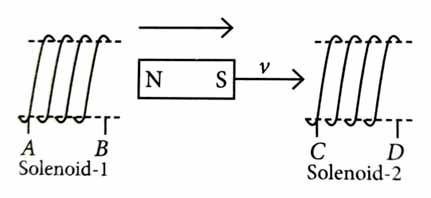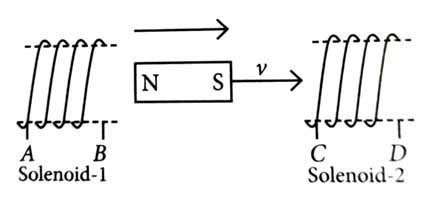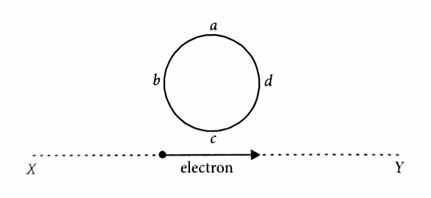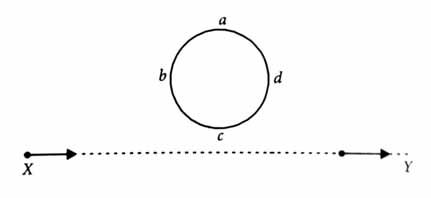Topic Question Set
Q 1
:

In the above diagram, a strong bar magnet is moving towards solenoid-2 from solenoid-1. The direction of induced current in solenoid-1 and that in solenoid-2, respectively, are through the directions [2024]

AB and DC
BA and CD
AB and CD
BA and DC
(1)

In the given figure, north pole of the magnet is moving away from the solenoid AB. So the direction of current at end B is in such a way that it will oppose the movement of the bar magnet towards solenoid 2. Hence, end B will act as south pole and direction of current will be in clockwise direction i.e., A to B.
Now, south pole of the bar magnet is approaching solenoid-2, hence, it will oppose the movement of the magnet, therefore, C will act as South pole and induced current will be in anti-clockwise direction i.e., D to C.
Q 2
:
An electron moves on a straight line path as shown. The is a coil adjacent to the path of electron. What will be the direction of current, if any, induced in the coil? [2015]


The current will reverse its direction as the electron goes past the coil
No current induced
-
-
(1)

When the electron moves from X to Y, the flux linked with the coil (which is into the page) will first increase and then decrease as the electron passes by. So, the induced current in the coil will be first anticlockwise and will reverse its direction (i.e., will become clockwise) as the electron goes past the coil.

